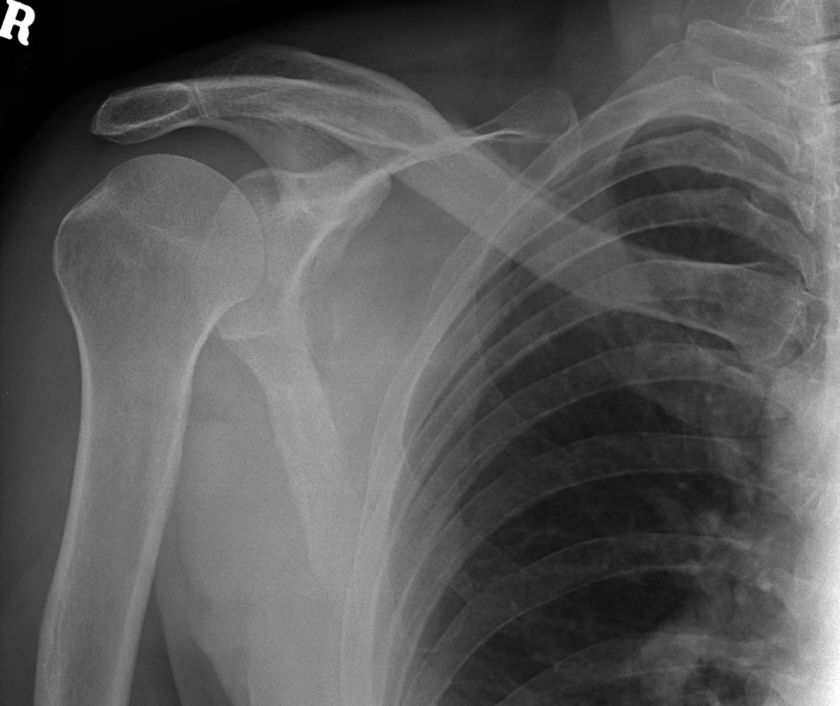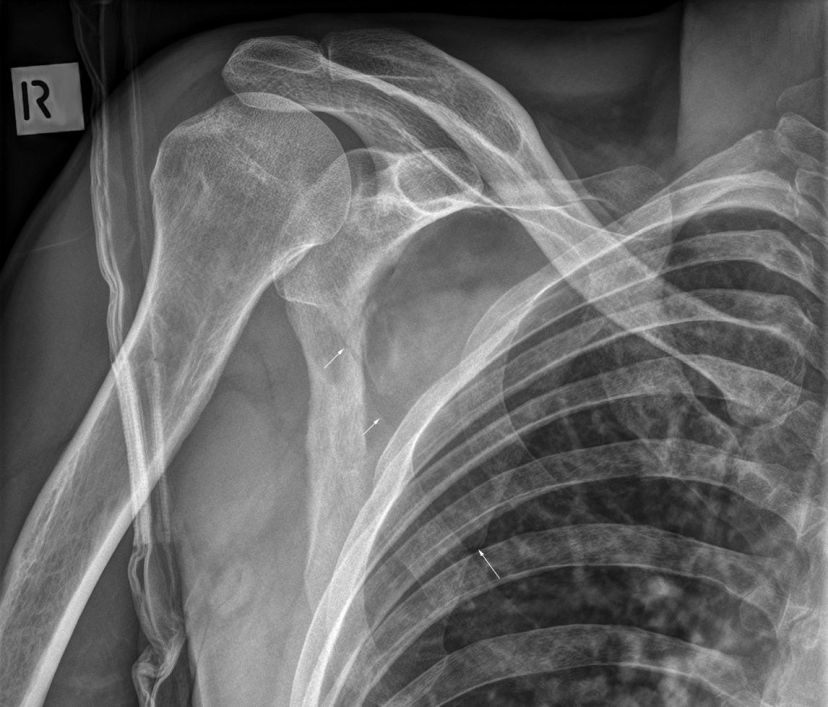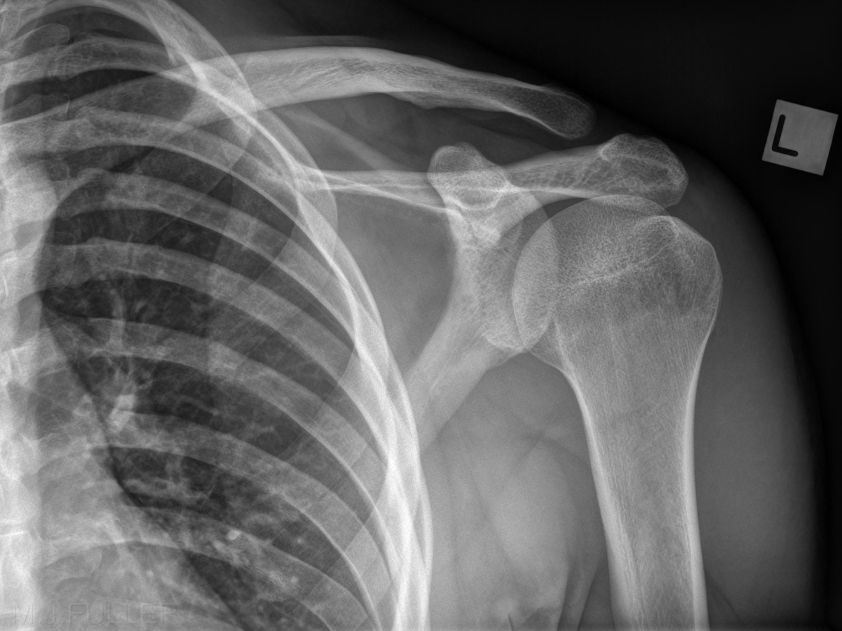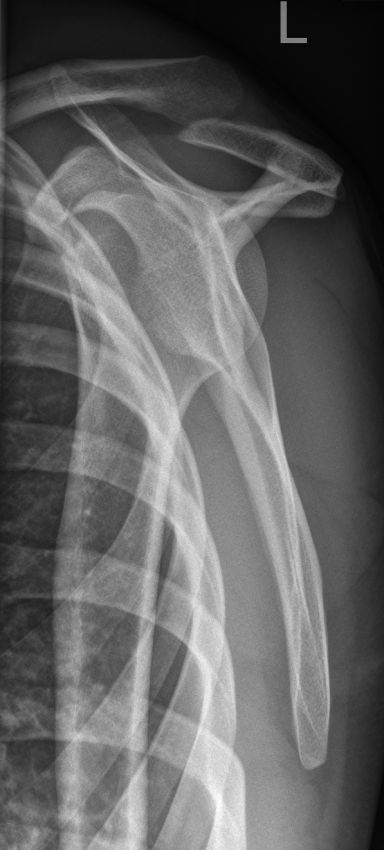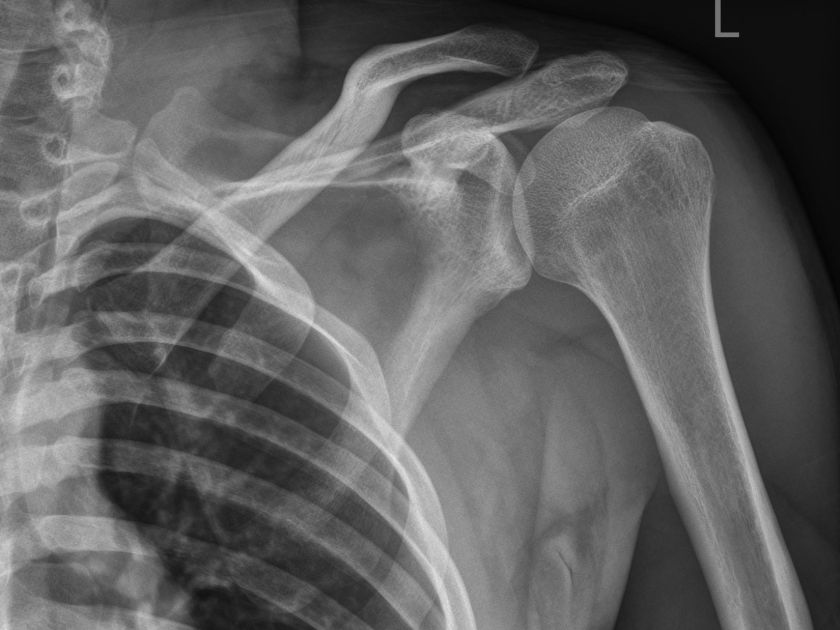Breathing Technique for Demonstration of the Scapula
Jump to navigation
Jump to search
Introduction
Case 1
...back to the wikiradiography home page
... back the Applied Radiography home page
The breathing technique is employed where there is benifit in bluring soft tissues to provide improved demonstration of bony anatomy. Breathing technique applied to the AP shoulder projection is rarely employed but can be useful on the rare occasion when other plain film projections and techniques have failed.
Case 1
Case 2
...back to the wikiradiography home page
... back the Applied Radiography home page
